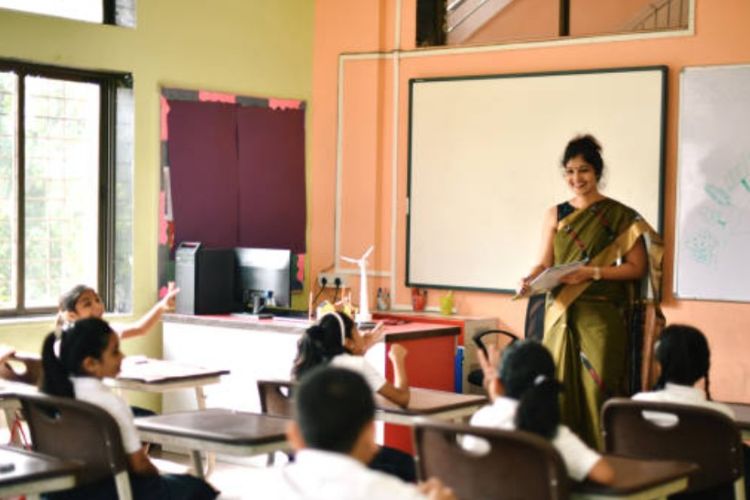
India’s smart classrooms falter: It begins with a pause. A smartboard flickers and dies. The teacher stops mid-sentence. Students wait. What should be a minor technical glitch becomes a metaphor for India’s digital-learning experiment gone off course. The problem is not the absence of devices, but the absence of the conditions that make them work.
This breakdown is widespread, not anecdotal. The ASER 2022 survey finds that 61% of rural schools face regular electricity interruptions, while over one-third lack any backup power. In states like Uttar Pradesh, Bihar, and Jharkhand, rural power supply averages under 20 hours a day, with outages peaking during school hours. The result is not a small disruption but a collapse of continuity, cognition, and confidence.
READ | EV adoption in India slows despite record sales surge
How power cuts break pedagogy
Classroom learning depends on rhythm. A 40-minute lesson built around an interactive activity collapses if the smartboard fails midway—not only because the tool vanishes, but because attention breaks. Teachers shift to improvisation. Students drift. Repetition trains them to expect learning in fragments rather than as narrative arcs. The promise of ed-tech—deeper engagement, dialogue, and sustained thinking—evaporates.
The larger damage is ethical. Governments announce digital classrooms but fail to ensure electricity. The implicit lesson is that optics matter more than outcomes. Inequality widens. Wealthier private schools install generators. Government schools make do with blinking screens and disappointed teachers. A tool meant to bridge the learning divide ends up deepening it.
Technology is not self-executing
Behind these failures lies a persistent delusion: that distributing devices is enough. But pedagogy is not plug-and-play. It depends on reliable power, trained teachers, and continuity of use. Technology philosopher Langdon Winner described this as “technological somnambulism”—sleepwalking into innovation without building the systems that make it meaningful.
India risks turning ed-tech investments into symbolic artefacts: impressive to display, ineffective in practice. The gap between procurement and preparedness is now the central obstacle to digital learning.
The first reform is simple. Every digital classroom must include guaranteed power. A smartboard without a UPS or solar backup is a stranded asset. Pilots in Rajasthan and Jharkhand show that a 2–3 kW solar-plus-battery system, costing under ₹80,000 per classroom, can provide over 90% uptime even in high-outage regions.
These are not luxuries. They are the minimum conditions for usable technology.
The case for blackout pedagogy
A skilled teacher plans for disruption the way a trained pilot prepares for turbulence. India needs structured training—not slogans—in blackout pedagogy: routines, question loops, card-based simulations, and board-driven activities that keep learning on track during outages. This is not a return to chalk-and-talk, but a strategy to preserve continuity when power fails.
Some states are showing what works. In Tamil Nadu’s Tirunelveli district, school clusters have formed solar cooperatives using rooftop panels funded through CSR and operated by school management committees. They cut energy costs and double as hands-on labs where students learn about renewable systems, budgeting, and civic responsibility. The infrastructure becomes part of the curriculum.
Such models are scalable. They position schools as energy-secure institutions rather than passive victims of outages.
From electrification to ‘lesson uptime’
India still measures electrification as a binary: connected or not. But digital learning needs a new metric—lesson uptime, the proportion of scheduled teaching time during which digital tools are actually usable. A school with tablets but no power from 11 a.m. to 4 p.m. is not digitally empowered. It is digitally stranded.
Public reporting of lesson uptime, disaggregated by district and social group, would shift policy from symbolism to service delivery.
Smart classrooms: Rethinking policy targets
Education ministries often celebrate the number of devices distributed. A more meaningful question is: In how many schools do these devices work for at least 80% of teaching hours? And are they reaching poorer districts or simply deepening disparities? Such questions reward systems, not announcements.
The empty smartboard is not an accident. It signals a larger policy failure: the mistaken belief that hardware is reform. Without reliable electricity, teacher preparation, and equitable access, smart classrooms become an illusion of progress.
The true task is systemic. India must build stable, power-secure, teacher-ready, equity-driven learning environments. Only then will screens support learning instead of interrupting it. Digital reform succeeds not when devices arrive, but when they work—every day, in every classroom.
Debdulal Thakur is Professor, Vinayaka Mission’s School of Economics and Public Policy, Chennai.

